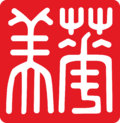China Institute facts for kids
 |
|
| Established | 1926 |
|---|---|
| Type | 501(c)3 organization |
| Focus | Education, Arts, Cultural Programs |
| Headquarters | 100 Washington Street, New York, NY 10006 |
The China Institute in America is a special place in New York City that teaches people about Chinese culture. It's a non-profit group, meaning it's not for making money. Instead, it focuses on sharing the rich history and traditions of China. They do this through interesting talks, language classes, and art shows. The Institute also works with the East China Normal University to host a Confucius Institute, which helps people learn Chinese language and culture.
Contents
Discovering China's Past
How the China Institute Started
The China Institute was created in 1926. It was founded by a group of smart people from both America and China. One important founder was John Dewey, a famous teacher from Columbia University. Another was Hu Shih, a Chinese educator who later became the president of Beijing University and China's ambassador to the U.S.
A Long History of Learning
This organization is thought to be the oldest one in the United States that is completely focused on Chinese culture. For almost 100 years, it has welcomed many visitors. Over one million people have come to learn and explore at the China Institute.
Moving to a New Home
For many years, the China Institute was located in the Upper East Side of New York City. In 2015, they announced plans to move to a new, bigger location. This new space opened in November 2016 at 100 Washington Street in Lower Manhattan. This move happened at the same time their art gallery celebrated its 50th birthday!

